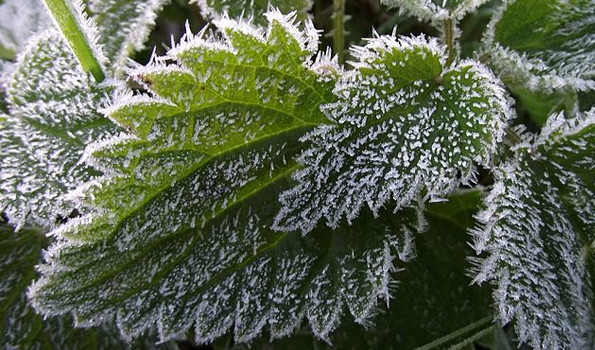Preventing Frost Damage on Your Plants
Winter Lawn, Annuals, Plants
Many residents who are new to the Phoenix area are shocked to learn that there really is a winter season in the desert. The area is famous for the “dry heat” of the summer which can reach in excess of 110 degrees but little is mentioned about the large temperature swing which occurs in the winter time. The daytime temps can be quite pleasant reaching even into the 70’s but clear skies can result in almost a 40 degree temperature loss at night. These freezing temperatures can do a great deal of damage to your plants if they are left unprotected on these cold nights.
Frost Damage and what it does to Plants
When you see a plant with leaves that look burnt and brown in the winter time that is most likely the result of frost. When ice crystals form on the surface of the plant leaves, they draw moisture out of the leaf. This is basically causing the leaf to dehydrate and dry out just as it would in extreme heat. And like leaves which has suffered and dried out from over exposure to the sun, a frost burnt leaves will not recover. It is critical that you protect delicate plants from frost damage as the loss of too many leaves will result in the entire plant dying.
Proper Frost Protection
Covering plants to protect them is your best option but there are a few items that you need to be aware of to avoid causing additional damage to the plants.
- Be sure to only cover plants with paper or cloth to insulate them from the cold. NEVER USE PLASTIC (BLUE TARPS) AS IT DOES NOT ALLOW AIR TO CIRCULATE AND ICE WILL CERTAINLY FORM ON THE LEAVES AND DAMAGE THE PLANT.
- Drape the plant from the top all the way to the ground. This allows the heat radiating up from the ground to continue to warm the plant after the sun has set. If possible use a frame to support the cover and not the plant.
- Be sure that the cover is not too heavy for the plant to support to avoid damaging the plant.
- Uncover plants in the morning after the temperature has risen above freezing. This can be later than just after sunrise as the coldest part of the night is normally just before sunrise.
- Maintain regular watering.
Other Types of Protection
For new trees and plants, additional mulch can be placed around the base of the plant to insulate the delicate root system. If a tree is too large to cover but has recently been planted, wrapping the trunk is a good idea. This practice is also often used to protect the delicate trunks of citrus trees. For an extended period of freezing weather it can be necessary to provide supplemental heat for covered trees or large plants. Placing a 100 watt lightbulb, in an approved outdoor fixture, under the foliage and the draped covering will generate heat which will rise up through the foliage and protect the entire tree. Be careful not to place the bulb close enough to touch any of the branches or the trunk of the tree to avoid damage.
Planning Ahead
If all of this sounds like a lot of work and something that you would rather not be forced to deal with, then be sure to carefully plan your landscape prior to planting. Plant placement can be a great way to avoid the “fun” of tucking in your plants and trees each night. Western and southern exposures tend to be the warmest and will reduce the chances of frost damage on your more delicate plants. Also, block walls and the stucco on your home collect and reflect heat to the surrounding plants. Planting near these surfaces can reduce the chance of damage if the cold weather is not too severe. And planting in full sun areas is also helpful as the surrounding ground will absorb and then radiate more heat to protect the plants from cold nights. Finally, carefully consider your plant choices. Pygmy Date Palms, Hibiscus, Bougainvillea and even many cactus are not tolerant of the cold. Selecting these plants will almost certainly mean that you will need to bundle them up for a few nights each winter or replant in the spring. Consider these frost tolerant plants when landscaping your home:
- Rosemary
- Euonymus
- Iris
- Little John Bottle Brush
- Japanese Privet
- Pittosporum
- Decorative Grasses
When the Damage is already Done
Life happens and there are occasions when you just don’t see a weather forecast until it’s too late. Hopefully, all of your plants are hearty and healthy enough to survive a little frost bite. You will definitely be able to see the damage the following day. If the leaves look brown or black then they did get damaged. It will look unsightly, but DO NOT give in to the urge to trim off the frost damage. The damaged leaves and branches will serve as additional insulation for the remainder of the winter. In the spring as you see new growth beginning to appear then you can trim off the dead areas.
As your plants and trees become larger and more established the level of care needed to protect them from the frost should diminish. As a rule, there are always a few cold nights in the valley each year. And your plants will become hardened to the conditions and environment. With proper planning and plant selection when you designing your yard and a few years of TLC on cold nights, your landscape can remain beautiful and healthy year round.
